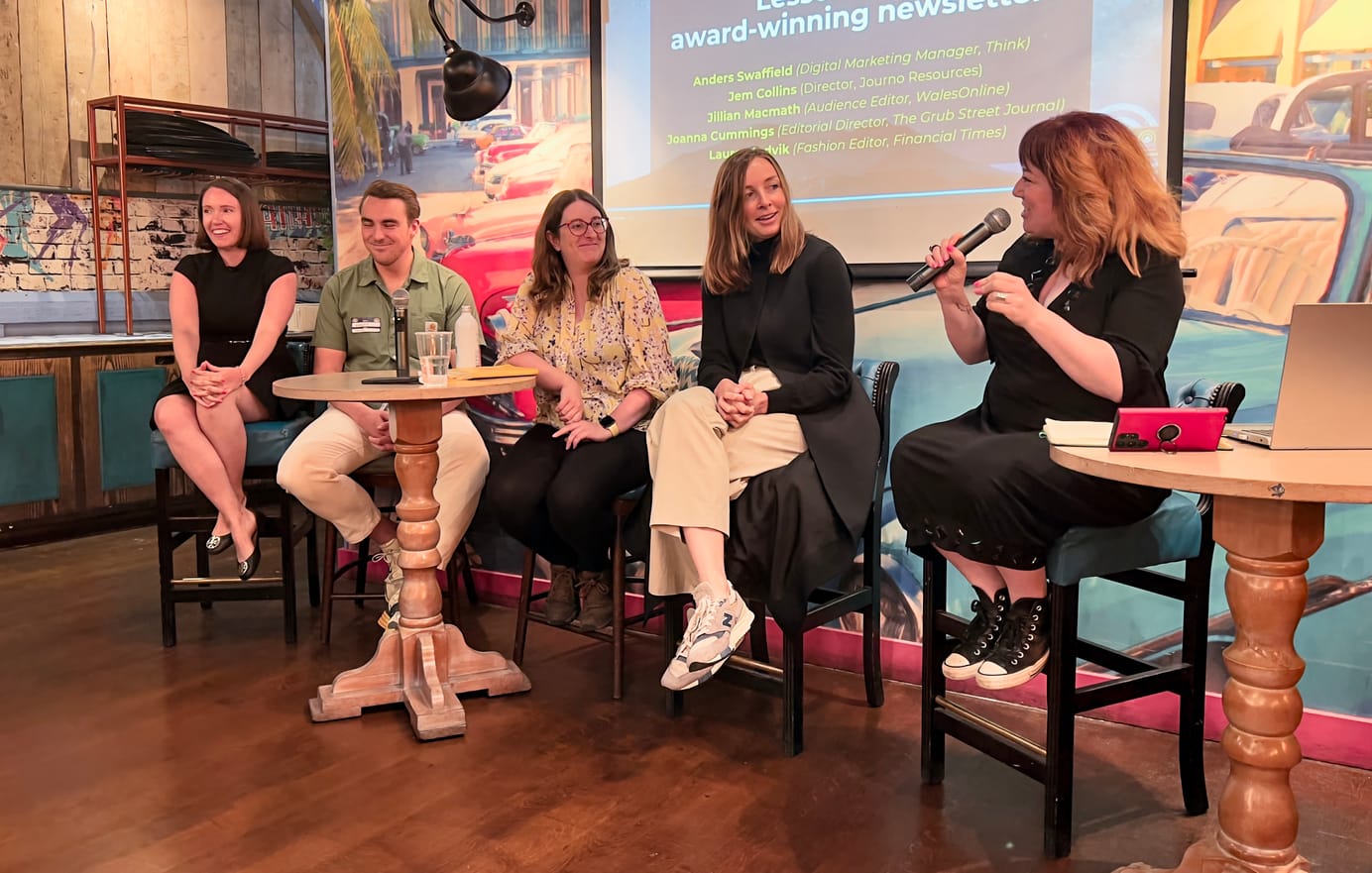
Understanding Editorial Newsletters: a brief guide
The hype around the "star journalist" newsletter is in danger of obscuring a deeper and more important truth about the role of newsletters in journalism.
Newsletters are the new hotness. They are all over the journalism world right now, largely based on the growing excitement about the potential of the individual newsletter created by a well-known journalist, who ends up becoming a self-sustaining media node through subscriptions. I don’t deny that this is an exciting development, and one we should be celebrating.
However, the hype aroud them, as so often happens with future of journalism moments, is in danger of falling foul of “bright, shiny thing” syndrome. We need to step back from the trees, and see the wood as a whole. And there’s more to newsletters than a famous journalist getting a big pay cheque straight from his audience. (And its does seem to be largely men — why is that?)
The Newsletter Auteur
There are a number of reasons why the growth of what we might call the auteur newsletter is going to be constrained, exciting though it is. I’ve written more than once about the discovery problems that are likely to emerge. More than that, there are a number of challenges that will stand in the way of their growth:
- Not everybody wants to be a solo creator. It’s lonely, demanding work, and can be demoralising. The worst thing about sending out a new newsletter is the unsubscribes that follow, and that can be brutal. Now, imagine that newsletter is your only source of income…
- Some journalism is just better done better in teams
- Subscription fatigue is real, and will constrain the growth of the market especially as the financial impact of the pandemic continues to bite
- Even some early successes will fade quickly, as the harsh reality of maintaining a publication on its own, and the impact of subscriber churn, becomes felt
Are newsletters the future of journalism? Of course not. There will be some notable successes, many will fail, and some will sit somewhere in the middle. I have a membership option here, but I have no realistic ambition of it being my sole source of income, just continuing its growth into a comfortable additional source of income.
Will newsletters be a part of the publishing ecosystem? Yes, of course. Pioneers like Ben Thompson and Bill Bishop have shown how this can be done over the last few years — but you might want to note that both are essentially B2B publications. People will find niches, content formats and styles that work, and the journalism world will be richer for it.
New Newsletter Platforms
It’s almost disingenuous to call platforms like SubStack a newsletter platform: they are more complex than that. The emergent brand of newsletter platforms are built around the individual creator model, but work by bundling together three components:
- A content management system
- A newsletter delivery system
- A membership management system
The pioneers in this space had to build their own stack out of disparate components, using things like WordPress and Memberful, but as the model become more successful it was inevitable that others would move into the space with more integrated offers. I’ve broken down the key characteristics of three platforms, and Medium and WordPress are all moving into this space as well.
The best way to think of these platforms is as emergent content management systems, with built-in subscriptions and audience engagement tools. The fact that so many platforms see newsletters as critical to their functional offering is indicative of the wider trend, that the “star journalist” newsletter hype is obscuring.
The trees in my earlier metaphor are those indy newsletter stars, but the wood is the sheer power of the newsletter as an engagement form. Newsletters are far more than just a tool for individual creators to build an audience: they’re a central plank of any sensible audience engagement strategy.
Newsletter as audience engagement strategy
My worry is that the hype we’ve seen in recent weeks about the “star journalist” newsletter will obscure the wider role newsletters play in the publishing ecosystem. Their critical importance is that they are a (largely) unmediated medium: there’re no algorithm sitting between you and your audience deciding what they see. (The small exception here is Gmail which indeed has some algorithmic work sorting your email — it’s one of the reasons I don’t use it.)
So, from an audience development point of view, newsletters are a critical tool in moving readers acquired via the main algorithmic methods — search and social — and potentially allowing them to come into a direct relationship with a publisher. Instead of hoping that we surface in the searches or feeds, we aim to drop into their inboxes with a useful, curated set of information that progressively builds both trust between them and our publication, and which establishes itself as a habit in their lives.
The Pioneer: Quartz Daily Brief
Quartz — which nowadays seems to have acquired the adjective “troubled” — led the way here over half a decade ago, with the launch of their effective morning briefing. It was a masterclass in an editorial product perfectly built for its original business-centric audience:
- It was timely, delivered exactly when they needed it: before 6am in their financial time zone
- It was a time-efficient aggregation of everything they needed to know
- It was comprehensive — linking out to more than just Quartz sources
- It was completable — giving subscribers the feeling that they were up-to-date
Curation Models
This curation model is still playing out well. For example, Matt Navarra’s Social Media Geek Out newsletter is a big link and analysis dump in a single weekly newsletter, but which allows social media managers to catch-up on all the tactical and strategic information they need to remain on top of their jobs.
That format won’t work for everyone, though. The Media Voices team have found that shorter, more frequent newsletters deliver results for them — but their audience is different, being targeted at journalists with a publisher/business of news edge. They’re very much in the “morning briefing” style, though.
Newsletter Strategy Considerations
As you start thinking about a newsletter strategy, here are some key things to think about:
Timing
When suits your readers? When do they have a “news moment”, as Sarah Marshall would term it, that you can usefully deliver something into their in-box? Do they want a morning roundup? Some evening analysis and contextualisation? A weekly catch-up?
Habit
Clearly, this is deeply tied into the point above; get the timing right, and you allow people to develop a habit of reading the newsletter. For example, there’s a couple of newsletters that arrive late Friday afternoon, which I save to read during my daughters’ martial arts class, and which I get annoyed by if they’re NOT ready for me then. (Newsletters have much in common with podcasts in this regard.)
Niche
One effective use of newsletters is to develop a closer relationship with a niche of your audience. For example, you might be running a general hospitality magazine, but want to build closer relationship with a segment of your audience: say restaurant sommeliers (this example feels… odd during the pandemic, but I love the hospitality business, which is where I started my journalism career, and would love to see it bounce back, so stick with me on this…).
Even if your CMS doesn’t give you an easy way to personalise the site to a particular interest, you can develop newsletter streams for each niche within your broader brand, and get subscribers to signup for the newsletter that most closely matches their own interests.
Format
A good newsletter has similarities with a good magazine: you become familiar with its format, and you learn which sections you enjoy and which you don’t. What stories are going to grab the recipient's attention, and make them want to open it? What delights down the newsletter are going to keep them reading, rather than browsing the first few sections and deleting?
Dense Discovery — a well-named newsletter — does this really well, and I saw a good talk on newsletter format last year.
Voice
Many of the new wave of newsletters have a distinct “human voice” — a named person writing an introduction at the beginning. Many don’t. Different audiences appreciate different approaches. Some just like the information delivered as efficiently as possible, others prefer the sense of a human writing directly to them. The former group are focused on utility, the second on insider connection.
The Next Newsletter
It’s fairly bizarre that I started this piece with the assertion that newsletters are the new hotness. After all, email is as old as I am. And yet, it’s only in the last few years, as the industry as a whole has become aware of the risks of outsourcing all our audience growth to Google and Facebook, that we’ve really started re-evaluating our relationship with it as a medium.
There’s still plenty of work to be done in building newsletters that are editorial products in their own right, or which are a critical engagement component of a bigger editorial product. I’m always fairly surprised when I’m doing engagement consultancy or training for a client, and they mention that they don’t have a newsletter.
There’s enough compelling evidence out there that they can make a significant difference to your business. It’s worth investing the time in getting the starter right.
If you're intested in learning more about newletter strategy, I'm running an online training course and workshop in conjunction with journalism.co.uk next month. You can still grab a place — it should be a fun, interesting series of sessions.
Sign up for e-mail updates
Join the newsletter to receive the latest posts in your inbox.










